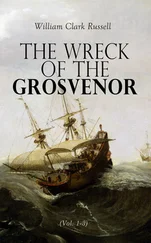William Clark - History of the Expedition under the Command of Captains Lewis and Clark, Vol. I.
Здесь есть возможность читать онлайн «William Clark - History of the Expedition under the Command of Captains Lewis and Clark, Vol. I.» — ознакомительный отрывок электронной книги совершенно бесплатно, а после прочтения отрывка купить полную версию. В некоторых случаях можно слушать аудио, скачать через торрент в формате fb2 и присутствует краткое содержание. Жанр: Путешествия и география, История, foreign_edu, foreign_antique, foreign_prose, на английском языке. Описание произведения, (предисловие) а так же отзывы посетителей доступны на портале библиотеки ЛибКат.
- Название:History of the Expedition under the Command of Captains Lewis and Clark, Vol. I.
- Автор:
- Жанр:
- Год:неизвестен
- ISBN:нет данных
- Рейтинг книги:5 / 5. Голосов: 1
-
Избранное:Добавить в избранное
- Отзывы:
-
Ваша оценка:
- 100
- 1
- 2
- 3
- 4
- 5
History of the Expedition under the Command of Captains Lewis and Clark, Vol. I.: краткое содержание, описание и аннотация
Предлагаем к чтению аннотацию, описание, краткое содержание или предисловие (зависит от того, что написал сам автор книги «History of the Expedition under the Command of Captains Lewis and Clark, Vol. I.»). Если вы не нашли необходимую информацию о книге — напишите в комментариях, мы постараемся отыскать её.
History of the Expedition under the Command of Captains Lewis and Clark, Vol. I. — читать онлайн ознакомительный отрывок
Ниже представлен текст книги, разбитый по страницам. Система сохранения места последней прочитанной страницы, позволяет с удобством читать онлайн бесплатно книгу «History of the Expedition under the Command of Captains Lewis and Clark, Vol. I.», без необходимости каждый раз заново искать на чём Вы остановились. Поставьте закладку, и сможете в любой момент перейти на страницу, на которой закончили чтение.
Интервал:
Закладка:
Tuesday 10th. We proceeded on by a prairie on the upper side of Wolf river, and at four miles passed a creek fifteen yards wide on the south, called Pape's creek after a Spaniard of that name, who killed himself there. At six miles we dined on an island called by the French Isle de Salomon, or Solomon's island, opposite to which on the south is a beautiful plain covered with grass, intermixed with wild rye and a kind of wild potatoe. After making ten miles we stopped for the night on the northern side, opposite a cliff of yellow clay. The river has neither risen nor fallen to day. On the north the low land is very extensive, and covered with vines; on the south, the hills approach nearer the river, and back of them commence the plains. There are a great many goslins along the banks.
Wednesday 11th. After three miles sailing we came to a willow island on the north side, behind which enters a creek called by the Indians Tarkio. Above this creek on the north the low lands are subject to overflow, and further back the undergrowth of vines particularly, is so abundant that they can scarcely be passed. Three miles from the Tarkio we encamped on a large sand island on the north, immediately opposite the river Nemahaw.
Thursday 12th. We remained here to day for the purpose of refreshing the party, and making lunar observations. The Nemahaw empties itself into the Missouri from the south, and is eighty yards wide at the confluence, which is in lat. 39° 55' 56". Capt. Clarke ascended it in the perioque about two miles to the mouth of a small creek on the lower side. On going ashore he found in the level plain several artificial mounds or graves, and on the adjoining hills others of a larger size. This appearance indicates sufficiently the former population of this country; the mounds being certainly intended as tombs; the Indians of the Missouri still preserving the custom of interring the dead on high ground. From the top of the highest mound a delightful prospect presented itself—the level and extensive meadows watered by the Nemahaw, and enlivened by the few trees and shrubs skirting the borders of the river and its tributary streams—the lowland of the Missouri covered with undulating grass, nearly five feet high, gradually rising into a second plain, where rich weeds and flowers are interspersed with copses of the Osage plum; further back are seen small groves of trees; an abundance of grapes; the wild cherry of the Missouri, resembling our own, but larger, and growing on a small bush; and the chokecherry, which we observed for the first time. Some of the grapes gathered to-day are nearly ripe. On the south of the Nemahaw, and about a quarter of a mile from its mouth, is a cliff of freestone, in which are various inscriptions and marks made by the Indians. The sand island where we are encamped, is covered with the two species of willow, broad and narrow leaf.
July 13th. We proceeded at sunrise with a fair wind from the south, and at two miles, passed the mouth of a small river on the north, called Big Tarkio. A channel from the bed of the Missouri once ran into this river, and formed an island called St. Joseph's, but the channel is now filled up, and the island is added to the northern shore. Further on to the south, is situated an extensive plain, covered with a grass resembling timothy in its general appearance, except the seed which is like flaxseed, and also a number of grapevines. At twelve miles, we passed an island on the north, above which is a large sandbar covered with willows: and at twenty and a half miles, stopped on a large sandbar, in the middle of the river opposite a high handsome prairie, which extends to the hills four or five miles distant, though near the bank the land is low, and subject to be overflowed. This day was exceedingly fine and pleasant, a storm of wind and rain from north-northeast, last night, having cooled the air.
July 14. We had some hard showers of rain before seven o'clock, when we set out. We had just reached the end of the sand island, and seen the opposite banks falling in, and so lined with timber that we could not approach it without danger, when a sudden squall, from the northeast, struck the boat on the starboard quarter, and would have certainly dashed her to pieces on the sand island, if the party had not leaped into the river, and with the aid of the anchor and cable kept her off: the waves dashing over her for the space of forty minutes; after which, the river became almost instantaneously calm and smooth. The two periogues were ahead, in a situation nearly similar, but fortunately no damage was done to the boats or the loading. The wind having shifted to the southeast, we came at the distance of two miles, to an inland on the north, where we dined. One mile above, on the same side of the river, is a small factory, where a merchant of St. Louis traded with the Ottoes and Pawnees two years ago. Near this is an extensive lowland, part of which is overflowed occasionally, the rest is rich and well timbered. The wind again changed to northwest by north. At seven and a half miles, we reached lower point of a large island, on the north side. A small distance above this point, is a river, called by the Maha Indians, Nishnahbatona. This is a considerable creek, nearly as large as the Mine river, and runs parallel to the Missouri the greater part of its course, being fifty yards wide at the mouth. In the prairies or glades, we saw wild-timothy, lambsquarter, cuckleberries, and on the edges of the river, summer-grapes, plums, and gooseberries. We also saw to-day, for the first time, some elk, at which some of the party shot, but at too great a distance. We encamped on the north side of the island, a little above Nishnahbatona, having made nine miles. The river fell a little.
July 15. A thick fog prevented our leaving the encampment before seven. At about four miles, we reached the extremity of the large island, and crossing to the south, at the distance of seven miles, arrived at the Little Nemaha, a small river from the south, forty yards wide a little above its mouth, but contracting, as do almost all the waters emptying into the Missouri, at its confluence. At nine and three quarter miles, we encamped on a woody point, on the south. Along the southern bank, is a rich lowland covered with peavine, and rich weeds, and watered by small streams rising in the adjoining prairies. They too, are rich, and though with abundance of grass, have no timber except what grows near the water; interspersed through both are grapevines, plums of two kinds, two species of wild-cherries, hazlenuts, and gooseberries. On the south there is one unbroken plain; on the north the river is skirted with some timber, behind which the plain extends four or five miles to the hills, which seem to have little wood.
July 16. We continued our route between a large island opposite to our last night's encampment, and an extensive prairie on the south. About six miles, we came to another large island, called Fairsun island, on the same side; above which is a spot, where about twenty acres of the hill have fallen into the river. Near this, is a cliff of sandstone for two miles, which is much frequented by birds. At this place the river is about one mile wide, but not deep; as the timber, or sawyers, may be seen, scattered across the whole of its bottom. At twenty miles distance, we saw on the south, an island called by the French, l'Isle Chance, or Bald island, opposite to a large prairie, which we called Baldpated prairie, from a ridge of naked hills which bound it, running parallel with the river as far as we could see, and from three to six miles distance. To the south the hills touch the river. We encamped a quarter of a mile beyond this, in a point of woods on the north side. The river continues to fall.
Tuesday, July 17. We remained here this day, in order to make observations and correct the chronometer, which ran down on Sunday. The latitude we found to be 40° 27' 5"4/10. The observation of the time proved our chronometer too slow, by 6' 51"6/10. The highlands bear from our camp, north 25° west, up the river. Captain Lewis rode up the country, and saw the Nishnahbatona, about ten or twelve miles from its mouth, at a place not more than three hundred yards from the Missouri, and a little above our camp. It then passes near the foot of the Baldhills, and is at least six feet below the level of the Missouri. On its banks are the oak, walnut, and mulberry. The common current of the Missouri, taken with the log, is 50 fathoms in 40", at some places, and even 20".
Читать дальшеИнтервал:
Закладка:
Похожие книги на «History of the Expedition under the Command of Captains Lewis and Clark, Vol. I.»
Представляем Вашему вниманию похожие книги на «History of the Expedition under the Command of Captains Lewis and Clark, Vol. I.» списком для выбора. Мы отобрали схожую по названию и смыслу литературу в надежде предоставить читателям больше вариантов отыскать новые, интересные, ещё непрочитанные произведения.
Обсуждение, отзывы о книге «History of the Expedition under the Command of Captains Lewis and Clark, Vol. I.» и просто собственные мнения читателей. Оставьте ваши комментарии, напишите, что Вы думаете о произведении, его смысле или главных героях. Укажите что конкретно понравилось, а что нет, и почему Вы так считаете.












